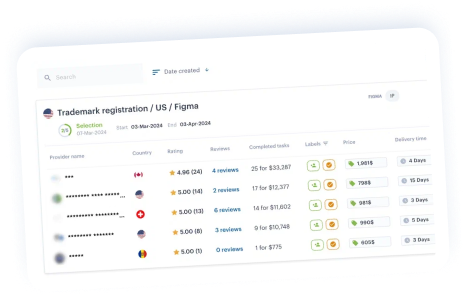Trademarks are valuable assets that need to be maintained to retain their legal protection. Understanding the validity period and trademark renewal process is crucial to ensure the continued protection of your trademark. In this article, we will explore the validity period of trademarks in the US, the trademark renewal process, and the importance of maintaining a valid registration.
Trademark renewal application in the US
In the United States, trademark registration is valid for ten years from the registration date. However, to maintain the registration and keep the trademark valid, the owner must file a trademark renewal application with the United States Patent and Trademark Office (USPTO) between the 9th and 10th year of the registration period.
It’s important for trademark owners to keep track of their renewal deadlines and submit the necessary paperwork on time, as failing to do so could result in the cancellation or expiration of the trademark registration. Additionally, trademarks can be deemed invalid if they are found to have been obtained fraudulently, if the mark has become generic, or if the mark is no longer in use. Therefore, trademark owners are required to file a declaration proving that the trademark is still in use.
Declaration of use for a trademark in the US
The declaration of use is a sworn statement from the trademark owner that the trademark is still used in commerce with the goods or services listed in the registration. The trademark owner must submit a declaration between the 5th and 6th year of registration.
The owner must also provide a specimen of use showing the trademark as it is used in commerce. If the trademark is not in use, the owner must file a declaration of excusable nonuse, explaining the reason for the nonuse, such as a delay in production or sales due to circumstances beyond their control.
Below are the requirements for filing the declaration.
If the trademark is in use:
- a statement that the trademark is in use in commerce;
- a list of the goods or services in connection with which the trademark is in use;
- a specimen (example of how the trademark is used). Examples of acceptable specimens are tags/labels affixed to goods and advertisements for services.
If the trademark is not in use:
- a list of the goods or services with which the trademark is not in use in commerce;
- the date of the last use of the trademark in commerce;
- the approximate date when use in commerce is expected to resume;
- details regarding the reason for nonuse;
- specific steps being taken to resume use.
The validity of trademark registration in the US may be canceled if it is shown that the trademark has not been used for 3 consecutive years during its registration.
Combined filing (trademark renewal and declaration of use)
Between the 9th and 10th year after trademark registration, you must file a combined declaration of use and/or excusable nonuse and application for trademark renewal (combined filing.) There is a fee per class of goods or services for filing a combined declaration and application for renewal. There is a higher fee per class if you file during the grace period of 6 months.
You must file a combined declaration and application for trademark renewal every 10 years calculated from the registration date. Failure to file required maintenance documents will result in the registration being canceled or expired. If your registration is canceled, your only recourse is to file a new application with a new filing fee.
Final thoughts
Maintaining the validity of trademark registration is crucial for ensuring the continued protection of your brand and intellectual property. Understanding the trademark renewal process and filing requirements and monitoring your trademark for potential infringement or unauthorized use can help you protect your business interests. By taking proactive steps to maintain your trademark registration, you can safeguard your brand’s identity and reputation for years to come.
***
The iPNOTE platform features more than 700 IP law firms that cover more than 150 countries, so you can always find the right direct service provider using our flexible filtering system.
Look at our directory of trademark attorneys in the United States.
Sign up for free, and we’ll help you solve any IP-related problem.
Protect your brand internationally with trademark registration in the UAE, and ensure thorough coverage with Italian trademark search.






